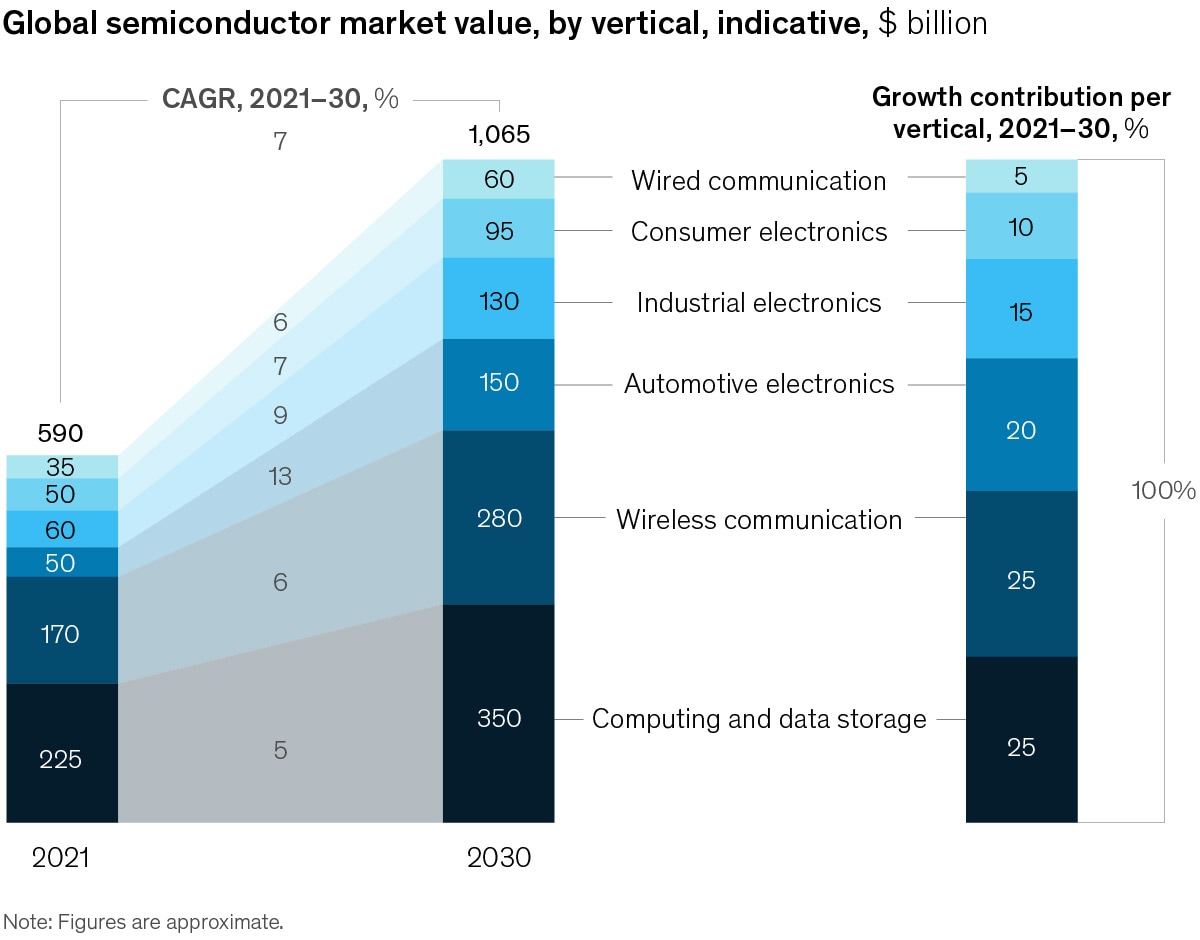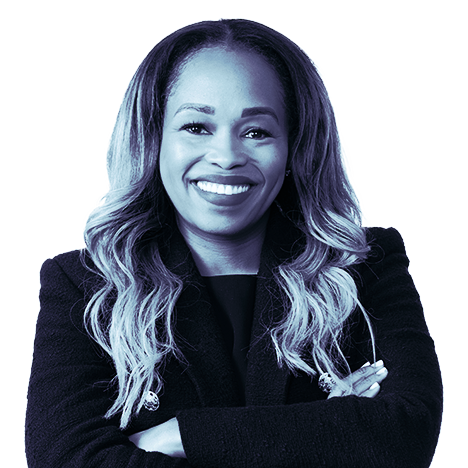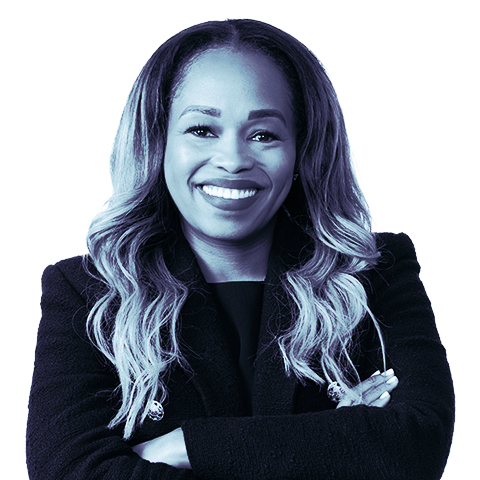
| Our best ideas, quick and curated | May 6, 2022
|
| This week, a playbook for how CEOs handle inflation, which many haven’t dealt with for years. Plus, what’s driving the white-hot semiconductor market, and a McKinsey expert on the future of retail stores in the omnichannel era. |
|
|
|
| Price pressure. Few chief executives have faced the challenge of leading a company through an inflationary spike like today’s. The consumer price index rose by 8.5 percent from March 2021 to March 2022 in the United States (a 40-year high), 7.5 percent in the eurozone, and 7 percent in the United Kingdom. More than half of advanced economies are grappling with year-on-year inflation above 5 percent. |
| Stakeholder management. Operating in today’s uncertain environment, with a wider range of stakeholders, means that CEOs must think about performance in broader terms than just inflation’s implications for profitability. They have to lead with the complete business cycle and their complete slate of stakeholders in mind. |
| Asking the right questions. There are many unknowns right now, and CEOs have to set priorities that work for their organization no matter what direction inflation takes. How can companies design products, services, and experiences to deliver value? How should they pursue repricing? What capabilities will increase a company’s resilience and control costs? How is the new talent landscape affecting compensation, benefits, and workplace norms? These are just a few questions CEOs should be mulling. |
| To say this is a broad portfolio is an understatement. Our research into the behaviors and mindsets of excellent CEOs shows the pivotal role that chief executives play in setting a clear direction, aligning the organization, managing stakeholders, and serving as “motivator in chief.” The best CEOs act boldly, but they also listen a lot first, asking questions and empowering employees. |
| Strategic partners. In “Navigating inflation: A new playbook for CEOs,” we look at how CEOs can create a strategy that does many things at once, including building digital, integrated, and agile supply chains; helping procurement leaders create value, not just cut costs; and setting prices to strengthen customer relationships. Creating an inflation program management office is crucial to this effort, allowing the CEO to set clear goals and communicate them to the entire organization. It also enables them to select a team of functional leaders who may not be department heads, and to empower the CFO or another direct report to coordinate these activities and carry out the mandate. Perhaps most important, the office can follow a systematic, fact-based approach to track execution, diagnose wins and losses, correct course, and learn. |
|
|

|
|
|
| PODCAST |
| Making the metaverse your business |
| No official definition yet exists for the metaverse, but companies can’t afford to wait until one does to start experimenting and investing in it. In a series of episodes from the McKinsey Technology Council’s new podcast, At the Edge, metaverse experts explore this ever-evolving cutting-edge technology—and what it means for companies. |
|
|
|
|
|
|
| THREE QUESTIONS FOR |
| Tiffany Burns |
| Tiffany Burns, a partner in McKinsey’s Atlanta office, works with apparel, consumer, and retail clients to design enterprise-wide and functional transformations. She leads the firm’s retail-store focus in North America. |
|
|
|
|
| When we talk about the trends reshaping the future of stores, we see some retailers are getting omnichannel wrong. On the flip side, what are the best retailers doing on this front? |
| Many retailers still think, “There are omnichannel interactions and store interactions, and I’m optimizing those two things separately. I have two different teams working on and thinking about those experiences.” But as a consumer, when I go on the retailer’s website or app, I expect to see availability, a connection to what’s in the store, and a way to order things that I can pick up in-store. I also expect to be able to stand in the aisle in the store and research a product. Today, consumers are figuring out work-arounds to do all those things: they’re switching over from the app to Google, looking up the product, and searching for reviews. |
| But we see some retailers saying, “We’re going to make shopping a seamless experience for you. Our app will help you with wayfinding, give you inventory visibility in the store, and allow you to access all of our omnichannel opportunities to place an order and pick it up. We’ll allow you to stand in the aisle and do research on a product by scanning a QR code.” The best retailers—the ones who we believe will create winning omnichannel experiences in the future—are those who are solving for seamless interactions across channels. |
| Demand is growing for same-day delivery and even instant delivery. But is a backlash also growing, particularly as it relates to congestion in some neighborhoods and cities? How should stores be thinking about zero wait time? |
| The expectations for speed have significantly advanced. Five years ago, you didn’t expect an online order to get to you in less than a week. You also were completely fine ordering your Friday night pizza and waiting 90 minutes for it; you weren’t sitting in front of your phone and watching the dot as it turned down your street and stopped at the red light. |
| The question gets down to, “Where is it all going to land? What will be the future standard for delivery?” What we do know, though, is when you tell a customer that it will take three days [to receive a product], how often they say, “Never mind.” We’ve seen that when the wait times are higher than customers’ expectations—and that varies; it’s not one definitive number for all customers—half of them will abandon their carts. Retailers lose sales when they don’t get this equation right. |
| You asked about congestion. Funny enough, I had a delivery from a mass retailer to my house. The delivery person backed up across my driveway, onto my front yard, and onto the retaining wall. We had to get a tow truck and the police to come. And it was raining, so I was outside with the umbrella trying to help. It was too crazy. I thought, “I would’ve been so much better off just going to the store.” |
| So, to your point, the inconvenience to neighborhoods that could come with zero wait time is a consideration. Although I don’t think we’re at a breaking point yet, you could imagine that we could be in the near future. |
| Zero wait time almost certainly means more packaging, more delivery vehicles on the road—not great from a sustainability perspective. How should retailers reconcile those contradictions? |
| Folks are starting to acknowledge that our delivery preferences are creating more waste. Some retailers are saying, “Are you willing to combine your shipments?” In the packaging space, they’re doing a lot in product development to try to use recyclable materials. |
| One interesting example on the sustainability side is solar energy. IKEA, for example, is installing solar car parks. Is it as convenient for consumers to navigate the parking lot with these structures? Probably not. But consumers are excited to see retailers putting a stake in the ground and saying they want to be more energy efficient. They are more willing than they’ve historically been to trade off a little bit of convenience in the spirit of more sustainable outcomes. |
| In the past year and a half, we’ve seen a broadening of the things that matter to consumers. One thing that matters to consumers now is diversity—both in terms of gender and race—of founders and creators of products on retail shelves. Consumers are saying, “I want to use my wallet to help promote equity. It’s one thing that I can do as an individual.” |
| — Edited by Barbara Tierney |
|
|
|
| BACKTALK |
| Have feedback or other ideas? We’d love to hear from you. |
|
 |
|
|
Did you enjoy this newsletter? Forward it to colleagues and friends so they can subscribe too.
Was this issue forwarded to you? Sign up for it and sample our 40+ other free email subscriptions here.
|
|
|
This email contains information about McKinsey’s research, insights, services, or events. By opening our emails or clicking on links, you agree to our use of cookies and web tracking technology. For more information on how we use and protect your information, please review our privacy policy.
|
|
You received this email because you subscribed to The Shortlist newsletter.
|
|
|
|
Copyright © 2022 | McKinsey & Company, 3 World Trade Center, 175 Greenwich Street, New York, NY 10007
|
|
|
|






